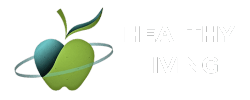Do you want to have a rounder, firmer, and more attractive butt? If so, you’re not alone. Many people are looking for ways to improve their glute muscles, which are responsible for the shape and strength of the buttocks. Glutes are also important for your posture, balance, and athletic performance.
But how can you grow your glutes in just 7 days? Is it even possible? The answer is yes, but it requires some dedication, consistency, and effort. In this article, we’ll show you 10 workouts that can help you achieve your glute goals in a week. These workouts are based on scientific research and proven methods, and they target the three main muscles of the glute: the gluteus maximus, the gluteus medius, and the gluteus minimus.
Before we start, let’s clarify some things. First, you can’t expect to see dramatic results in just 7 days. Glute growth takes time and patience, and it depends on many factors, such as your genetics, diet, and lifestyle. However, you can definitely see some improvement and feel more confident in your appearance.
Second, you need to follow a balanced and healthy diet that supports your muscle growth and recovery. This means eating enough protein, carbs, and healthy fats, and avoiding processed and junk foods. Third, you need to rest and recover properly between your workouts.
This means getting enough sleep, staying hydrated, and stretching your muscles. Fourth, you need to challenge yourself and push your limits. This means increasing the intensity, frequency, and duration of your workouts, and adding some resistance, such as weights or bands.
Now that we’ve covered the basics, let’s get to the workouts. You’ll need to do these workouts every day for 7 days, alternating between lower body and upper body exercises. This will help you avoid overtraining and give your muscles enough time to repair and grow.
You’ll also need to warm up before each workout and cool down after. You can do these workouts at home or at the gym, depending on your preference and availability. Here are the 10 workouts to grow your glutes in 7 days step by step:
Day 1: Lower Body Workout
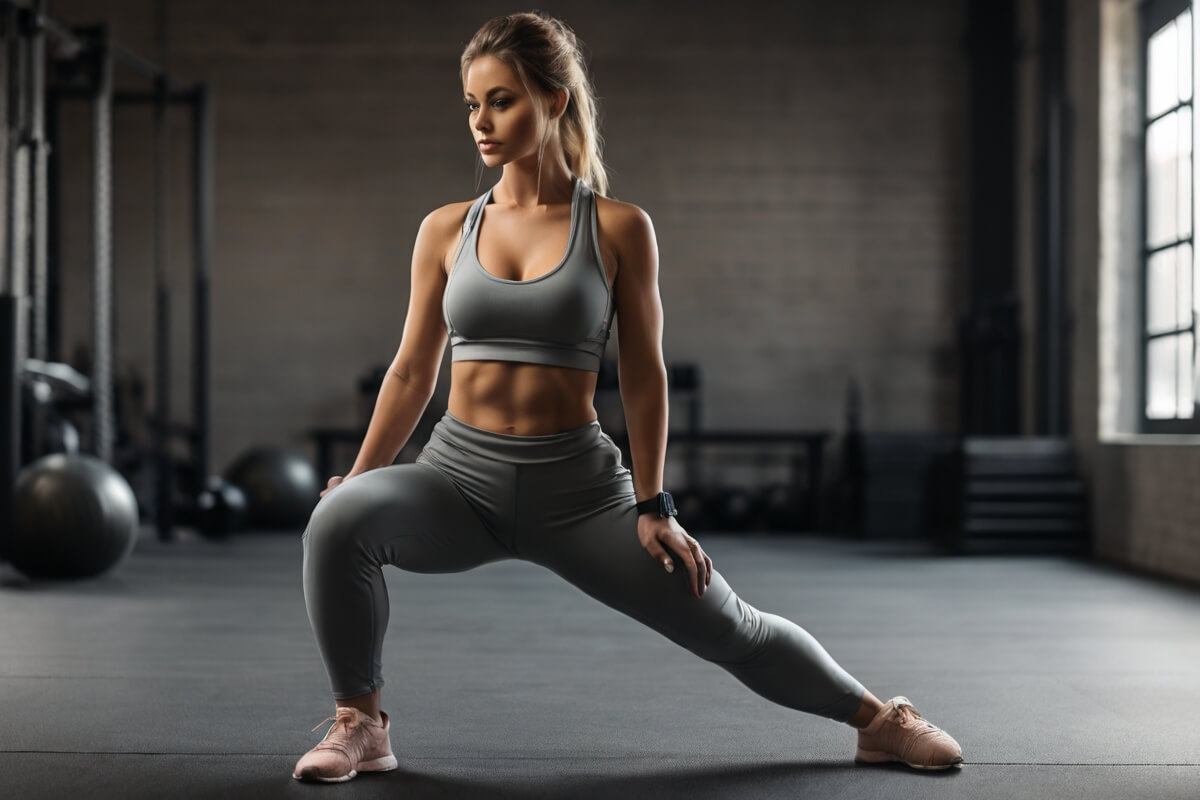
The first day of the challenge is a lower body workout that focuses on the gluteus maximus, the largest and most powerful muscle of the glute. This workout consists of 5 exercises that you’ll do for 3 sets of 15 reps each, with a 60-second rest between sets. You’ll need a pair of dumbbells, a resistance band, and a bench or a chair for this workout. Here are the exercises:
- Squats: Squats are one of the best exercises for glute growth, as they activate the entire lower body and core. To do squats, stand with your feet shoulder-width apart and hold a dumbbell in each hand. Keep your back straight and your chest up, and lower your hips until your thighs are parallel to the floor. Pause for a second, and then push yourself back up to the starting position. Squeeze your glutes at the top of the movement. Make sure to keep your knees in line with your toes, and don’t let them cave in or out.
- Lunges: Lunges are another great exercise for glute growth, as they target the gluteus maximus and the gluteus medius, the muscle that gives the butt a round shape. To do lunges, stand with your feet hip-width apart and hold a dumbbell in each hand. Take a big step forward with your right leg, and lower your body until your right thigh is parallel to the floor and your left knee is almost touching the ground. Pause for a second, and then push yourself back up to the starting position. Repeat with your left leg, and alternate between legs. Keep your torso upright and your core engaged, and don’t let your front knee go past your toes.
- Hip Thrusts: Hip thrusts are a must-do exercise for glute growth, as they isolate the gluteus maximus and minimize the involvement of the hamstrings and quads. To do hip thrusts, sit on the floor with your upper back resting on a bench or a chair, and your feet flat on the floor. Place a dumbbell on your hips, and hold it with your hands. Lift your hips off the floor, and squeeze your glutes at the top of the movement. Pause for a second, and then lower your hips back to the floor. Don’t let your butt touch the ground, and keep the tension on your glutes throughout the exercise.
- Donkey Kicks: Donkey kicks are an effective exercise for glute growth, as they target the gluteus maximus and the gluteus minimus, the muscle that gives the butt a lifted look. To do donkey kicks, get on all fours on a mat, and wrap a resistance band around your ankles. Keep your back straight and your core tight, and lift your right leg up, bending your knee at a 90-degree angle. Your foot should be flexed, and your thigh should be parallel to the floor. Pause for a second, and then lower your leg back to the starting position. Repeat with your left leg, and alternate between legs. Don’t arch your back or swing your leg, and keep the movement controlled and steady.
- Fire Hydrants: Fire hydrants are a complementary exercise for glute growth, as they target the gluteus medius and the gluteus minimus, the muscles that give the butt a round and firm shape. To do fire hydrants, get on all fours on a mat, and wrap a resistance band around your knees. Keep your back straight and your core tight, and lift your right leg to the side, keeping your knee bent at a 90-degree angle. Your leg should be in line with your hip, and your foot should be flexed. Pause for a second, and then lower your leg back to the starting position. Repeat with your left leg, and alternate between legs. Don’t twist your torso or move your hips, and keep the movement controlled and steady.
Day 2: Upper Body Workout

The second day of the challenge is an upper body workout that balances out the lower body workout and helps you build a symmetrical and harmonious physique. This workout consists of 5 exercises that you’ll do for 3 sets of 12 reps each, with a 60-second rest between sets. You’ll need a pair of dumbbells and a mat for this workout. Here are the exercises:
- Push-ups: Push-ups are one of the best exercises for upper body strength and endurance, as they work the chest, shoulders, triceps, and core. To do push-ups, get into a plank position on a mat, with your hands slightly wider than your shoulders and your feet together. Keep your body in a straight line from head to toe, and don’t sag or arch your back. Bend your elbows and lower your chest until it’s almost touching the mat. Pause for a second, and then push yourself back up to the starting position. Keep your elbows close to your body, and don’t flare them out. If push-ups are too hard, you can modify them by placing your knees on the mat, or by elevating your hands on a bench or a chair.
- Bicep Curls: Bicep curls are a classic exercise for arm development, as they target the biceps, the muscles that give the arms a curved and defined shape. To do bicep curls, stand with your feet shoulder-width apart and hold a dumbbell in each hand. Keep your arms straight and your palms facing up. Curl the dumbbells up to your shoulders, squeezing your biceps at the top of the movement. Pause for a second, and then lower the dumbbells back to the starting position. Keep your elbows close to your body, and don’t swing or jerk the weights.
- Shoulder Presses: Shoulder presses are a powerful exercise for shoulder development, as they target the deltoids, the muscles that give the shoulders a broad and rounded look. To do shoulder presses, stand with your feet shoulder-width apart and hold a dumbbell in each hand. Bring the dumbbells up to your shoulders, with your palms facing forward and your elbows bent at a 90-degree angle. Press the dumbbells up over your head, extending your arms fully. Pause for a second, and then lower the dumbbells back to the starting position. Keep your core engaged and your back straight, and don’t arch your back or shrug your shoulders.
- Tricep Extensions: Tricep extensions are an essential exercise for arm development, as they target the triceps, the muscles that give the arms a straight and toned look. To do tricep extensions, stand with your feet shoulder-width apart and hold a dumbbell in each hand. Raise the dumbbells over your head, with your palms facing each other and your arms straight. Keep your elbows close to your ears, and bend your arms
- Tricep Extensions: Tricep extensions are an essential exercise for arm development, as they target the triceps, the muscles that give the arms a straight and toned look. To do tricep extensions, stand with your feet shoulder-width apart and hold a dumbbell in each hand. Raise the dumbbells over your head, with your palms facing each other and your arms straight. Keep your elbows close to your ears, and bend your arms at the elbows, lowering the dumbbells behind your head. Pause for a second, and then extend your arms back to the starting position. Keep your core engaged and your back straight, and don’t move your shoulders or elbows.
- Lateral Raises: Lateral raises are a finishing exercise for shoulder development, as they target the lateral deltoids, the muscles that give the shoulders a wide and defined look. To do lateral raises, stand with your feet shoulder-width apart and hold a dumbbell in each hand. Keep your arms slightly bent and your palms facing your body. Raise your arms to the sides, until they are parallel to the floor. Pause for a second, and then lower your arms back to the starting position. Keep your shoulders down and your chest up, and don’t swing or jerk the weights.
Day 3: Lower Body Workout
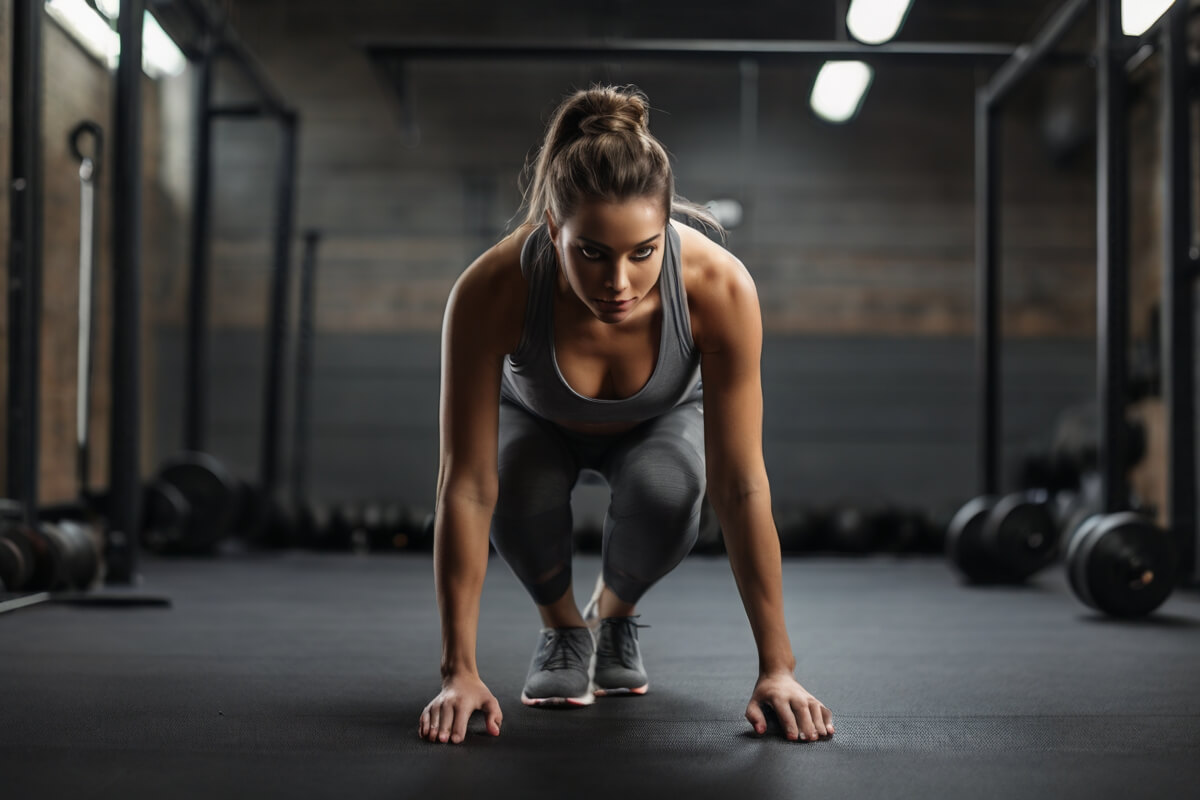
The third day of the challenge is a lower body workout that focuses on the gluteus medius and the gluteus minimus, the muscles that give the butt a round and lifted shape. This workout consists of 5 exercises that you’ll do for 3 sets of 20 reps each, with a 60-second rest between sets. You’ll need a resistance band and a mat for this workout. Here are the exercises:
- Clamshells: Clamshells are a simple but effective exercise for glute growth, as they target the gluteus medius and the gluteus minimus, the muscles that stabilize the hips and prevent them from collapsing inward. To do clamshells, lie on your right side on a mat, and wrap a resistance band around your knees. Keep your legs stacked and your knees bent at a 90-degree angle. Your hips should be aligned with your shoulders, and your feet should be in line with your hips. Lift your left knee up, opening your legs like a clamshell. Pause for a second, and then lower your knee back to the starting position. Don’t move your hips or your feet, and keep the tension on your glutes throughout the exercise. Repeat on your left side, and alternate between sides.
- Side-Lying Leg Lifts: Side-lying leg lifts are another simple but effective exercise for glute growth, as they target the gluteus medius and the gluteus minimus, the muscles that give the butt a round and firm shape. To do side-lying leg lifts, lie on your right side on a mat, and wrap a resistance band around your ankles. Keep your legs straight and your feet flexed. Your hips should be aligned with your shoulders, and your head should be resting on your right arm. Lift your left leg up, keeping it in line with your hip. Pause for a second, and then lower your leg back to the starting position. Don’t move your hips or your torso, and keep the movement controlled and steady. Repeat on your left side, and alternate between sides.
- Glute Bridges: Glute bridges are a staple exercise for glute growth, as they target the gluteus maximus and the gluteus medius, the muscles that give the butt a lifted and rounded look. To do glute bridges, lie on your back on a mat, and wrap a resistance band around your thighs. Keep your feet flat on the floor and your knees bent at a 90-degree angle. Your feet should be hip-width apart, and your arms should be by your sides. Lift your hips off the floor, and squeeze your glutes at the top of the movement. Pause for a second, and then lower your hips back to the floor. Don’t let your butt touch the ground, and keep the tension on your glutes throughout the exercise.
- Frog Pumps: Frog pumps are a variation of glute bridges, as they target the gluteus maximus and the gluteus medius, the muscles that give the butt a lifted and rounded look. To do frog pumps, lie on your back on a mat, and place the soles of your feet together, forming a diamond shape with your legs. Your knees should be bent and pointing out to the sides. Your arms should be by your sides. Lift your hips off the floor, and squeeze your glutes at the top of the movement. Pause for a second, and then lower your hips back to the floor. Don’t let your butt touch the ground, and keep the tension on your glutes throughout the exercise.
- Reverse Lunges: Reverse lunges are a variation of lunges, as they target the gluteus maximus and the gluteus medius, the muscles that give the butt a round and firm shape. To do reverse lunges, stand with your feet hip-width apart and your hands on your hips. Take a big step back with your right leg, and lower your body until your right knee is almost touching the ground and your left thigh is parallel to the floor. Pause for a second, and then push yourself back up to the starting position. Repeat with your left leg, and alternate between legs. Keep your torso upright and your core engaged, and don’t let your front knee go past your toes.
Day 4: Upper Body Workout
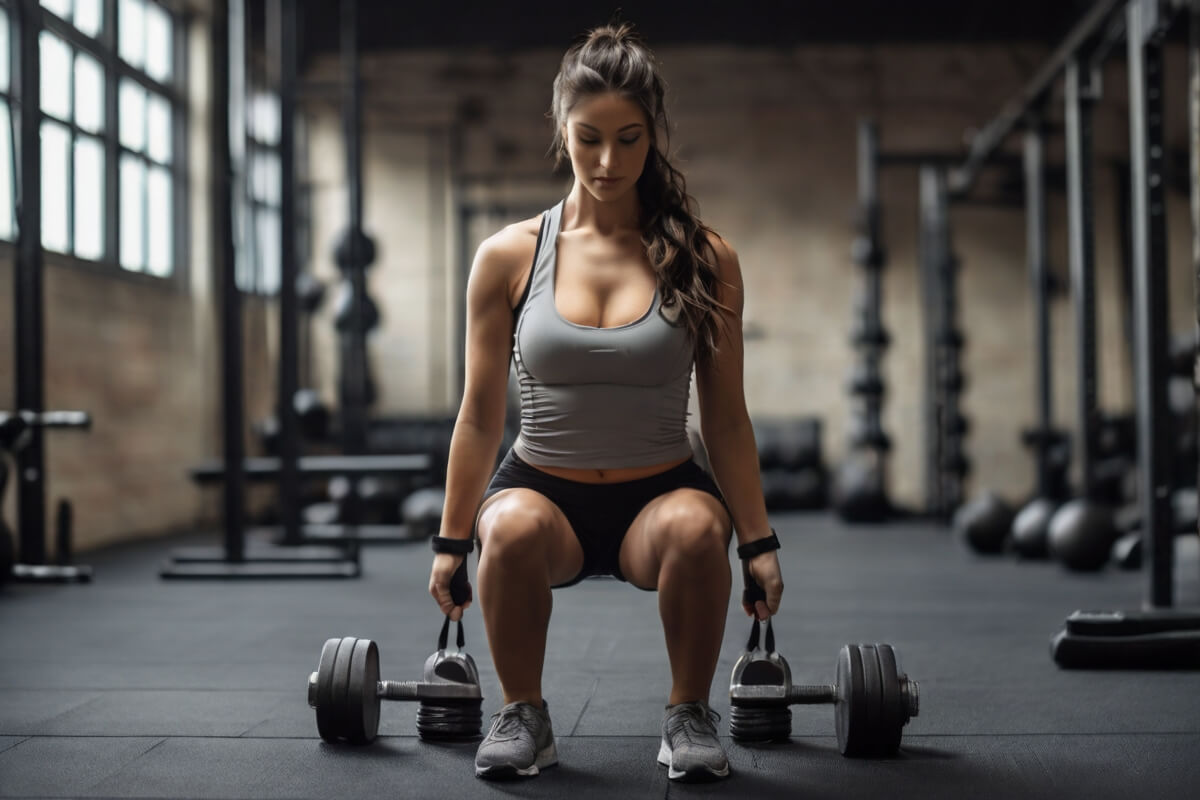
The fourth day of the challenge is an upper body workout that balances out the lower body workout and helps you build a symmetrical and harmonious physique. This workout consists of 5 exercises that you’ll do for 3 sets of 12 reps each, with a 60-second rest between sets. You’ll need a pair of dumbbells and a mat for this workout. Here are the exercises:
- Chest Presses: Chest presses are a powerful exercise for chest development, as they target the pectoralis major, the muscle that gives the chest a full and defined look. To do chest presses, lie on your back on a mat, and hold a dumbbell in each hand. Bring the dumbbells up to your chest, with your palms facing forward and your elbows bent at a 90-degree angle. Press the dumbbells up over your chest, extending your arms fully. Pause for a second, and then lower the dumbbells back to the starting position. Keep your core engaged and your back flat, and don’t arch your back or bounce the weights.
- Hammer Curls: Hammer curls are a variation of bicep curls, as they target the brachialis, the muscle that gives the arms a thick and strong look. To do hammer curls, stand with your feet shoulder-width apart and hold a dumbbell in each hand. Keep your arms straight and your palms facing each other. Curl the dumbbells up to your shoulders, squeezing your biceps at the top of the movement. Pause for a second, and then lower the dumbbells back to the starting position. Keep your elbows close to your body, and don’t swing or jerk the weights.
- Front Raises: Front raises are a complementary exercise for shoulder development, as they target the anterior deltoids, the muscles that give the shoulders a forward and rounded look. To do front raises, stand with your feet shoulder-width apart and hold a dumbbell in each hand. Keep your arms slightly bent and your palms facing your body. Raise your arms to the front, until they are parallel to the floor. Pause for a second, and then lower your arms back to the starting position. Keep your shoulders down and your chest up, and don’t swing or jerk the weights.
- Skull Crushers: Skull crushers are a challenging exercise for arm development, as they target the triceps, the muscles that give the arms a straight and toned look. To do skull crushers, lie on your back on a mat, and hold a dumbbell in each hand. Raise the dumbbells over your head, with your palms facing each other and your arms straight. Keep your elbows close to your ears, and bend your arms at the elbows, lowering the dumbbells behind your head. Pause for a second, and then extend your arms back to the starting position. Keep your core engaged and your back flat, and don’t move your shoulders or elbows.
- Rear Delt Flyes: Rear delt flyes are a finishing exercise for shoulder development, as they target the posterior deltoids, the muscles that give the shoulders a back and defined look. To do rear delt flyes, stand with your feet shoulder-width apart and hold a dumbbell in each hand. Bend your knees slightly and hinge your hips forward, until your torso is almost parallel to the floor. Keep your back straight and your arms hanging down, with your palms facing each other. Raise your arms to the sides, until they are parallel to the floor. Pause for a second, and then lower your arms back to the starting position. Keep your shoulders down and your chest up, and don’t swing or jerk the weights.
Day 5: Lower Body Workout
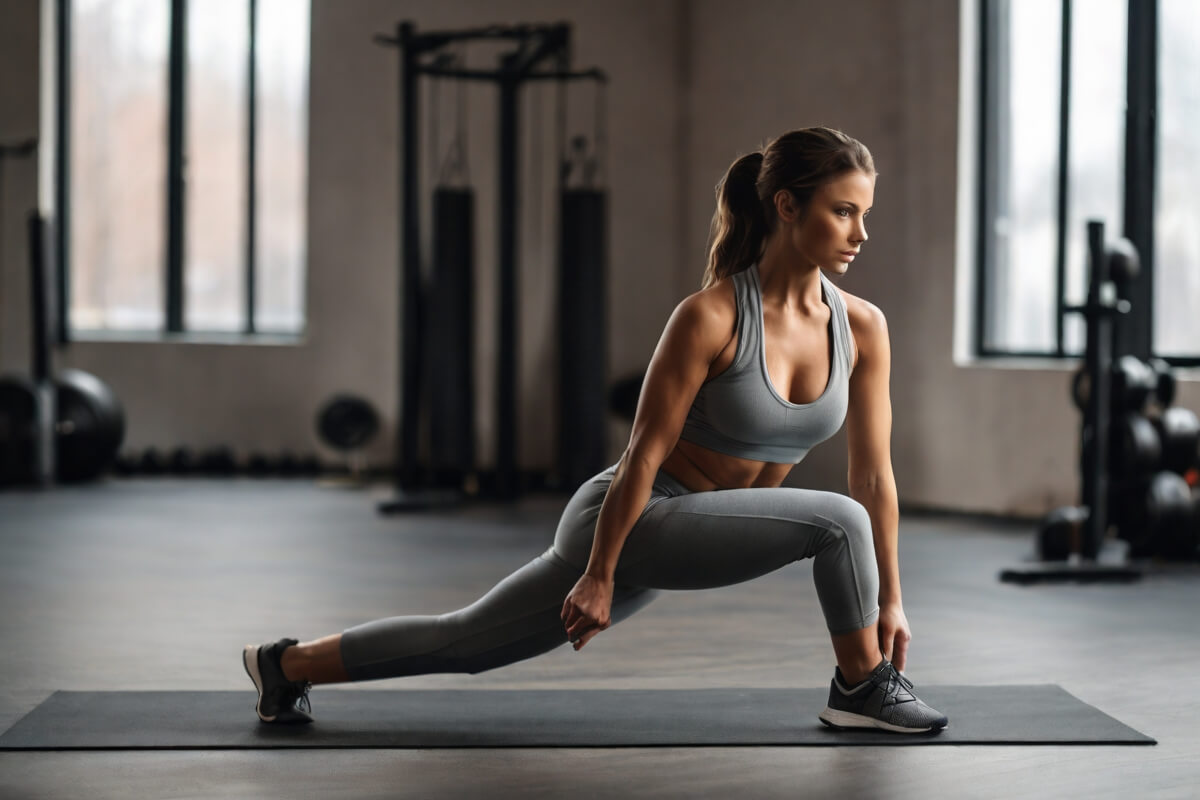
The fifth day of the challenge is a lower body workout that focuses on the gluteus maximus, the largest and most powerful muscle of the glute. This workout consists of 5 exercises that you’ll do for 4 sets of 10 reps each, with a 60-second rest between sets. You’ll need a pair of dumbbells, a resistance band, and a bench or a chair for this workout. Here are the exercises:
- Sumo Squats: Sumo squats are a variation of squats, as they target the gluteus maximus and the inner thighs, the muscles that give the butt a full and tight look. To do sumo squats, stand with your feet wider than your shoulders and your toes pointing out. Hold a dumbbell in front of your chest, with your palms facing each other. Keep your back straight and your chest up, and lower your hips until your thighs are parallel to the floor. Pause for a second, and then push yourself back up to the starting position. Squeeze your glutes at the top of the movement. Make sure to keep your knees in line with your toes, and don’t let them cave in or out.
- Bulgarian Split Squats: Bulgarian split squats are a challenging exercise for glute growth, as they target the gluteus maximus and the quads, the muscles that give the butt and the legs a strong and defined look. To do Bulgarian split squats, stand a few feet away from a bench or a chair, and place your right foot on it, with your toes pointing down. Hold a dumbbell in each hand, and keep your arms by your sides. Keep your torso upright and your core engaged, and lower your body until your left thigh is parallel to the floor and your right knee is almost touching the ground. Pause for a second, and then push yourself back up to the starting position. Repeat with your right leg, and alternate between legs. Don’t let your front knee go past your toes, and don’t lose your balance.
- Single-Leg Hip Thrusts: Single-leg hip thrusts are a variation of hip thrusts, as they target the gluteus maximus and the hamstrings, the muscles that give the butt and the back of the legs a curved and toned look. To do single-leg hip thrusts, sit on the floor with your upper back resting on a bench or a chair, and your feet flat on the floor. Place a dumbbell on your hips, and hold it with your hands. Lift your right leg off the floor, and extend it in front of you. Your foot should be flexed, and your leg should be in line with your hip. Lift your hips off the floor, and squeeze your glutes at the top of the movement. Pause for a second, and then lower your hips back to the floor. Don’t let your butt touch the ground, and keep the tension on your glutes throughout the exercise. Repeat with your left leg, and alternate between legs.
- Curtsy Lunges: Curtsy lunges are a variation of lunges, as they target the gluteus maximus and the gluteus medius, the muscles that give the butt a round and firm shape. To do curtsy lunges, stand with your feet hip-width apart and hold a dumbbell in each hand. Take a big step back with your right leg, and cross it behind your left leg, as if you were doing a curtsy. Lower your body until your left thigh is parallel to the floor and your right knee is almost touching the ground. Pause for a second, and then push yourself back up to the starting position. Repeat with your left leg, and alternate between legs. Keep your torso upright and your core engaged, and don’t let your front knee go past your toes.
- Glute Kickbacks: Glute kickbacks are a simple but effective exercise for glute growth, as they target the gluteus maximus and the gluteus minimus, the muscles that give the butt a lifted and rounded look. To do glute kickbacks, get on all fours on a mat, and wrap a resistance band around your ankles. Keep your back straight and your core tight, and lift your right leg up, extending it behind you. Your foot should be flexed, and your leg should be in line with your hip. Pause for a second, and then lower your leg back to the starting position. Repeat with your left leg, and alternate between legs. Don’t arch your back or swing your leg, and keep the movement controlled and steady.
Day 6: Upper Body Workout
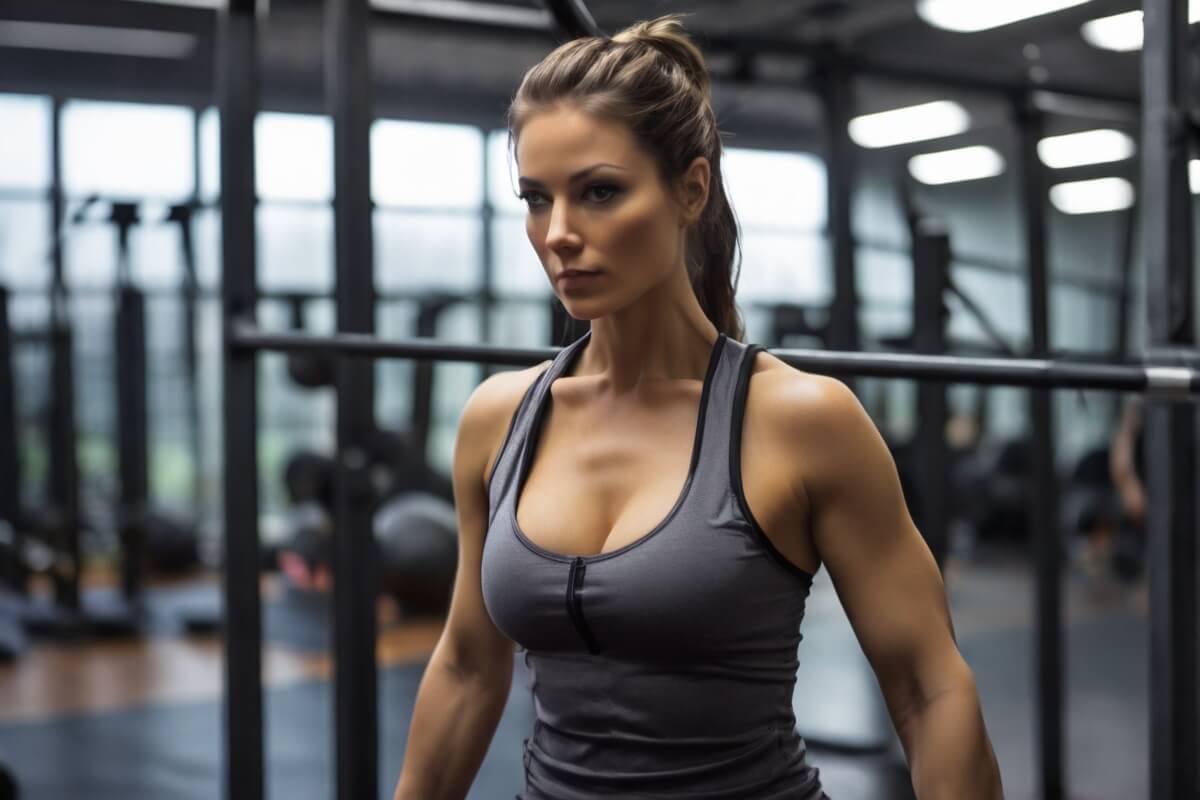
The sixth day of the challenge is an upper body workout that balances out the lower body workout and helps you build a symmetrical and harmonious physique. This workout consists of 5 exercises that you’ll do for 4 sets of 10 reps each, with a 60-second rest between sets. You’ll need a pair of dumbbells and a mat for this workout. Here are the exercises:
- Incline Chest Presses: Incline chest presses are a variation of chest presses, as they target the upper chest, the muscle that gives the chest a high and defined look. To do incline chest presses, lie on your back on a mat, and place your feet on a bench or a chair, forming a 45-degree angle with your body. Hold a dumbbell in each hand, and bring them up to your chest, with your palms facing forward and your elbows bent at a 90-degree angle. Press the dumbbells up over your chest, extending your arms fully. Pause for a second, and then lower the dumbbells back to the starting position. Keep your core engaged and your back flat, and don’t arch your back or bounce the weights.
- Concentration Curls: Concentration curls are a variation of bicep curls, as they target the peak of the biceps, the muscle that gives the arms a curved and defined look. To do concentration curls, sit on a bench or a chair, and hold a dumbbell in your right hand. Place your right elbow on your right thigh, and keep your arm straight. Curl the dumbbell up to your shoulder, squeezing your bicep at the top of the movement. Pause for a second, and then lower the dumbbell back to the starting position. Keep your elbow close to your body, and don’t swing or jerk the weight. Repeat with your left arm, and alternate between arms.
- Arnold Presses: Arnold presses are a variation of shoulder presses, as they target the entire shoulder, the muscle that gives the shoulders a broad and rounded look. To do Arnold presses, stand with your feet shoulder-width apart and hold a dumbbell in each hand. Bring the dumbbells up to your shoulders, with your palms facing you and your elbows bent at a 90-degree angle. Rotate your wrists and press the dumbbells up over your head, extending your arms fully. Pause for a second, and then reverse the movement, bringing the dumbbells back to the starting position. Keep your core engaged and your back straight, and don’t arch your back or shrug your shoulders.
- Overhead Tricep Extensions: Overhead tricep extensions are a variation of tricep extensions, as they target the long head of the triceps, the muscle that gives the arms a straight and toned look. To do overhead tricep extensions, stand with your feet shoulder-width apart and hold a dumbbell in both hands. Raise the dumbbell over your head, with your palms facing up and your arms straight. Keep your elbows close to your ears, and bend your arms at the elbows, lowering the dumbbell behind your head. Pause for a second, and then extend your arms back to the starting position. Keep your core engaged and your back straight, and don’t move your shoulders or elbows.
- Face Pulls: Face pulls are a finishing exercise for shoulder development, as they target the rear deltoids and the traps, the muscles that give the shoulders a back and defined look. To do face pulls, stand with your feet shoulder-width apart and hold a dumbbell in each hand. Keep your arms straight and your palms facing down. Raise your arms to the front, until they are parallel to the floor. Pull the dumbbells back to your face, bending your elbows and squeezing your shoulder blades. Pause for a second, and then lower your arms back to the starting position. Keep your shoulders down and your chest up, and don’t swing or jerk the weights.
Day 7: Lower Body Workout
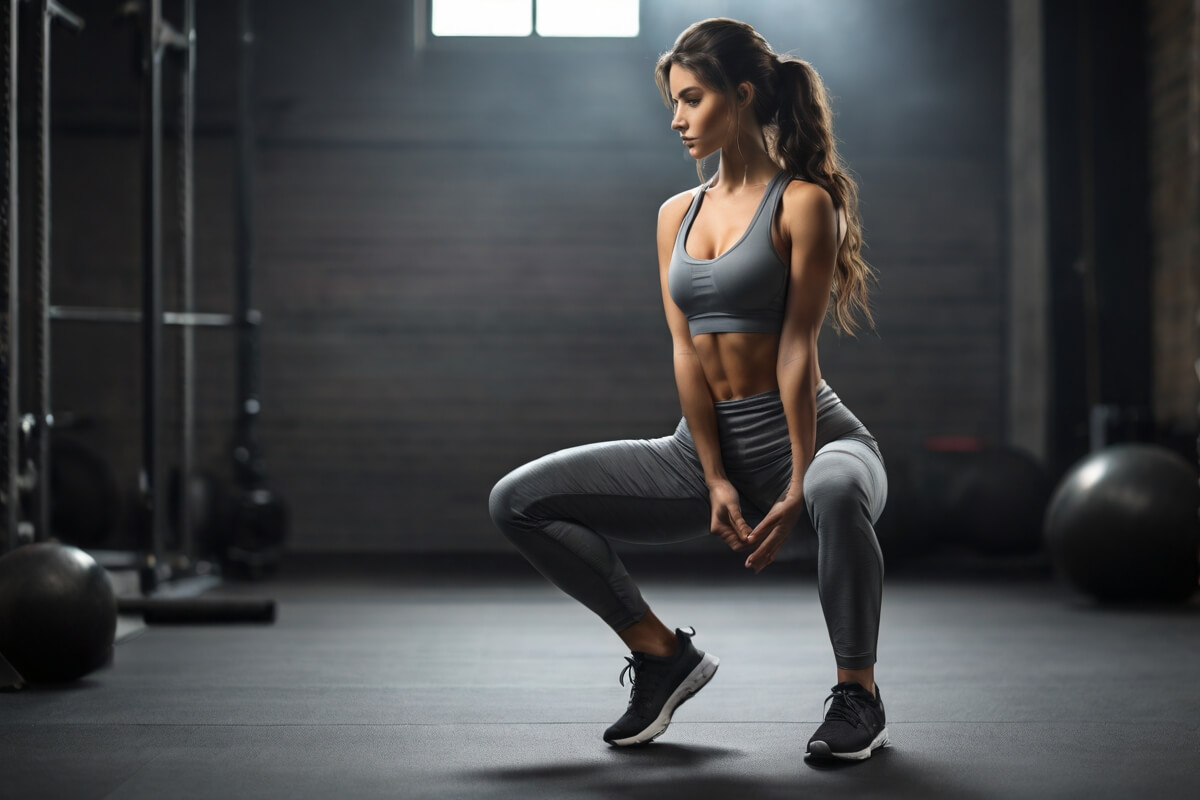
The seventh and final day of the challenge is a lower body workout that focuses on the gluteus maximus, the gluteus medius, and the gluteus minimus, the muscles that give the butt a round, lifted, and firm shape. This workout consists of 5 exercises that you’ll do for 5 sets of 8 reps each, with a 60-second rest between sets. You’ll need a pair of dumbbells, a resistance band, and a bench or a chair for this workout. Here are the exercises:
- Goblet Squats: Goblet squats are a variation of squats, as they target the gluteus maximus and the quads, the muscles that give the butt and the legs a strong and defined look. To do goblet squats, stand with your feet shoulder-width apart and hold a dumbbell in front of your chest, with your palms facing each other. Keep your back straight and your chest up, and lower your hips until your thighs are parallel to the floor. Pause for a second, and then push yourself back up to the starting position. Squeeze your glutes at the top of the movement. Make sure to keep your knees in line with your toes, and don’t let them cave in or out.
- Step-Ups: Step-ups are a challenging exercise for glute growth, as they target the gluteus maximus and the gluteus medius, the muscles that give the butt a round and firm shape. To do step-ups, stand in front of a bench or a chair, and hold a dumbbell in each hand. Keep your arms by your sides, and your palms facing your body. Step up onto the bench or the chair with your right foot, and push yourself up until your right leg is straight. Pause for a second, and then lower your left foot back to the floor. Repeat with your left foot, and alternate between feet. Keep your torso upright and your core engaged, and don’t lean forward or backward.
- Romanian Deadlifts: Romanian deadlifts are a powerful exercise for glute growth, as they target the gluteus maximus and the hamstrings, the muscles that give the butt and the back of the legs a curved and toned look. To do Romanian deadlifts, stand with your feet hip-width apart and hold a dumbbell in each hand. Keep your arms straight and your palms facing your body. Hinge your hips back, and lower the dumbbells down your legs, until your torso is almost parallel to the floor. Keep your back straight and your knees slightly bent. Pause for a second, and then squeeze your glutes and push your hips forward, returning to the starting position. Keep the dumbbells close to your body, and don’t round your back or lock your knees.
- Lateral Band Walks: Lateral band walks are a simple but effective exercise for glute growth, as they target the gluteus medius and the gluteus minimus, the muscles that stabilize the hips and prevent them from collapsing inward. To do lateral band walks, wrap a resistance band around your ankles, and stand with your feet shoulder-width apart. Keep your knees slightly bent and your toes pointing forward. Take a small step to the right with your right foot, and then follow with your left foot, keeping the tension on the band. Repeat for the desired number of reps, and then switch directions. Keep your torso upright and your core tight, and don’t let your knees cave in or out.
- Single-Leg Glute Bridges: Single-leg glute bridges are a variation of glute bridges, as they target the gluteus maximus and the gluteus medius, the muscles that give the butt a lifted and rounded look. To do single-leg glute bridges, lie on your back on a mat, and wrap a resistance band around your thighs. Keep your feet flat on the floor and your knees bent at a 90-degree angle. Your feet should be hip-width apart, and your arms should be by your sides. Lift your right leg off the floor, and extend it in front of you. Your foot should be flexed, and your leg should be in line with your hip. Lift your hips off the floor, and squeeze your glutes at the top of the movement. Pause for a second, and then lower your hips back to the floor. Don’t let your butt touch the ground, and keep the tension on your glutes throughout the exercise. Repeat with your left leg, and alternate between legs.
- Squat Jumps: Squat jumps are a dynamic exercise for glute growth, as they target the gluteus maximus and the quads, the muscles that give the butt and the legs a strong and defined look. To do squat jumps, stand with your feet shoulder-width apart and your hands by your sides. Keep your back straight and your chest up, and lower your hips until your thighs are parallel to the floor. Explosively jump up, and swing your arms up over your head. Land softly on your feet, and lower your hips back to the starting position. Keep your knees in line with your toes, and don’t let them cave in or out.
Conclusion
Congratulations, you’ve completed the 7-day challenge to grow your glutes! You’ve done 10 workouts that targeted the three main muscles of the glute: the gluteus maximus, the gluteus medius, and the gluteus minimus. You’ve also balanced your lower body workouts with upper body workouts, to build a symmetrical and harmonious physique. You’ve also followed a balanced and healthy diet, that supported your muscle growth and recovery. You’ve also rested and recovered properly between your workouts, to avoid overtraining and injury.
Now, you may be wondering: how much did your glutes grow in 7 days? Well, the answer depends on many factors, such as your genetics, diet, lifestyle, and starting point. However, you can definitely expect to see some improvement and feel more confident in your appearance. You may also notice that your clothes fit better, and that you have more energy and strength. You may also receive some compliments from your friends and family, who will notice your hard work and dedication.
But don’t stop here. Glute growth is a long-term process, that requires consistency and effort. You can’t expect to see dramatic results in just 7 days. You need to keep working on your glutes, and challenge yourself with new exercises, weights, and reps. You also need to keep eating well, and sleeping well. You also need to have fun, and enjoy the journey. Remember, glute growth is not only about aesthetics, but also about health, performance, and happiness.
We hope you enjoyed this article, and that you learned something new and useful. We also hope you enjoyed the workouts, and that you felt the burn and the pump in your glutes. We also hope you’re proud of yourself, and that you celebrate your achievements. You’ve done an amazing job, and you deserve to be happy.
If you liked this article, please share it with your friends and family, who may also benefit from it. Also, please leave us your honest feedback and suggestions, as we’d love to hear from you. What did you like about the article? What did you dislike? What did you learn? How did you feel? How did your glutes grow? Let us know in the comments below.
If you want a toned body all year round, check out the 30 Free Step-by-Step Workout Plans (Complete Guide)
